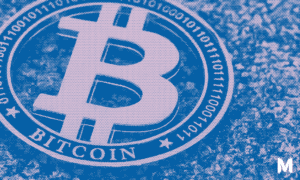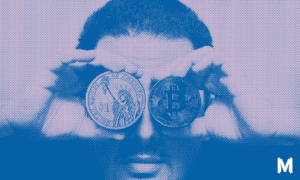The traditional and simple definition of a recession is when there are two consecutive quarters of declining GDP. But the National Bureau of Economic Research does not adhere to this definition and looks at other factors to determine when the US has entered a recession.
When asked at a press conference this week if he would consider the U.S. economy to be in a recession if GDP declined in this second quarter, Powell replied: “The Fed doesn’t make a judgment on that. Though, if you think about what a recession really is, it’s a broad-based decline across many industries that sustain for more than a couple of months and there are a bunch of specific tests in it. And this just doesn’t seem like that.”
So it seems that the Fed does not agree that the U.S. is in a recession.
After last quarter’s decline of 1.6%, a 0.5% growth was projected but instead this quarter’s readings showed a 0.9% decline. In spite of this news, both traditional assets and bitcoin are seeing an increase in price. Bitcoin seems to be largely unfazed by the news of the second-quarter GDP report showing a decline rather than a growth, as its price has continued to move higher over the last 24 hours and is now up by 8% and briefly rose above $24,000.
Jeff Dorman, chief investment officer at the digital-asset manager Arca Funds, believes that bitcoin is not a ‘store of value’ but instead a ‘store of excess value.’ Also adding that bitcoin’s price is a reflection of the probability of it being used as an actual currency in the future if confidence in fiat currencies declines. Some analysts believe that both the 75 basis point interest rate hike and the decline in GDP was expected; it could not have had a big impact on the bitcoin price.
Bitcoin’s open interest, which considers the total number of open positions held by market participants at any given time, is flashing some warning signals. The elevated open interest shows that there is very high leverage in the bitcoin market and having a lot of leverage always leads to liquidations and increased volatility. The market could move in any direction resulting in either a short squeeze or a long squeeze, with the price rising up to $25,000 or falling down to $20,000 respectively.
The daily RSI is currently in a buying zone and has moved above 50, which is often considered a sign of a bullish trend. If bitcoin continues with this trend and moves above $24,300, which would be its highest price since June 13th, this would be a signal that the BTC price has entered the third wave and a bearish scenario will become less likely.
Although a bullish trend is not 100% guaranteed, a move above this level will mean that the price could shoot up even higher and possibly reach $29,400. If bitcoin does not continue its upward trend and fails to clear the $24,000 resistance zone it could start a downside correction with support near the $23,740 level. If on its way up it encounters stiff resistance at the key level of $25,700 that causes a strong price reversal, this would be an indication that this has been a bull trap all along and the price will crash back down.
Funding rates have spent several weeks below neutral levels but last week the market experienced a much-needed influx of bullish sentiment on the part of perpetual traders. But this positive change only lasted momentarily as after only one week bitcoin’s funding rates have begun to switch back into the negative. This decline indicates that traders are returning to more careful trades.
A point worthy of note is that although there has been a decline in funding rates, traders continue to maintain higher lows. This means that while traders are being more careful, they have not yet given up on the bullish scenario. This trust is evidenced by bitcoin’s recent recovery but for this recovery to continue, the funding rates need to go back to a positive level.




